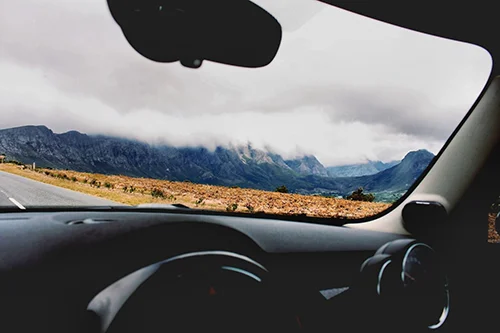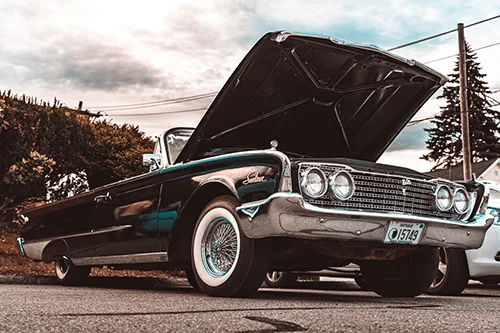Five Easy Steps To Dry Wet Car Carpet Or Seats
Introduction

Sometimes we make oversights and end up with a thoroughly soaked car in a torrential downpour. The natural conclusion to come to is that it will be a difficult task to get both the car carpet and seats dried properly, but fret not. This article will go through the best techniques as well as the steps to carry out to get your carpet and seats fully dried in no time. And if you’re wondering where to get the best car floor mats, be sure to check out Simply Car Mats.
Here are five simple steps to get your car interior dry as quickly as possible.
Firstly, it is advisable to remove all the floor mats in your car. Then, you can start vacuuming the carpets and seats using a normal home vacuum cleaner. Next, you want a clean towel on hand to absorb the excess water. This can be done by pressing the towel gently into the soaked areas, letting the towel do its job. For carpets, lift them and mop up the excess water that has accumulated below with another clean towel. Lastly, it is best to air out the interior by allowing all car doors to remain open. This will increase the chances of the interior drying faster. For better results, bring in fans to directly blow onto the front and back row of the car.
Do take note that rainy weather is not the sole reason for your interior getting soaked. Driving into puddles on roads and having a leaky car part can also contribute to your car interior becoming drenched. Next, we will be sharing some useful ways to ensure that your car interior remains moistureless and smells as fresh as new.
Generally, it takes about one to two days for seats to be completely dried. This is in cases when they have been entirely drenched through to the inside cushion. The drying process can be quickened in a couple of ways. For example, by parking your car inside such as in a garage where there is less moisture, and having the doors remain open with fans blowing continuously. An alternative way is to have a dehumidifier running while your car dries in the garage.
As mentioned above, carpets and seats can take a long while to dry. However, you can try to speed the drying process by supporting the carpet onto a ledge where a fan can be slotted below to blow directly. If there is no fan on hand, using a hairdryer is more tedious but will still get the job done.
You may be wondering how your car floor gets wet when it starts raining. This happens typically when a window is left half-open when it rains, allowing the rain to soak through the floor. However, if all the windows are closed when it rains but your car floor is wet, it might be a sign of a leak in the exterior of your car.
Follow where the wet spot is to find out where the leak might be located at. It is best to identify where the leak comes from before the wet area completely dries. This will allow you to repair the leak before your car interior gets even more damaged by moisture.

The following are examples of interior and exterior leaks.
If the wet spot is on your car’s floor after it has finished raining or if you have just gone through a car wash, the chances are that the leak is in the door or window seal, or you have a sunroof seal that has gotten loose or spoiled. Check the door frames thoroughly and you will be able to understand the severity of the problems in your seals.
Exterior Leaks
If you find small puddles of water on your car dashboard, there might be a loose seal on the windshield. On the other hand, if the puddle was found near the boot area, the leak could be caused by a faulty hatch window seal.
Places to check regularly in your car would be the plastic or foam right behind the door panels. Take note of any signs of condensation on the panels, or any small frissons on the membrane. For door seals, inspect for any damages or signs that it may be on its way to rotting. The rubber edge at the base of the car window should be undamaged and fit closely against the interior and exterior of the window. As for the sunroof seal and drainage gutter, it is important to scan for any cracks and blockages. Lastly, for the windshields and seals on hatch windows, check if the rubber has shrunk or cracked, and monitor if the rubber is still snugly fitted against the glass.
Interior Leak
If your puddles happen to gather on your car’s interior even when your car has not come into contact with moisture on the outside, there could be a chance that you have an interior leak. This is most commonly found on the floor in the front row and can be a result of a malfunctioning heater core, air-conditioning system, or even the cabin air filter.
In such scenarios, it is advisable to examine your heater core to see if water has puddled onto the floor of the passenger seats. You should also examine if the liquid has a slightly sweet odor or tint. It is most likely a coolant leak from a rusty connection if it is. The air conditioner should not be clogged as a clogged gutter can cause water to overflow and a leak to happen. Lastly, an air filter can easily cause leaks as well if it is not fitted snugly, or if the lid has become loose over time.
After identifying where the leak in your car has stemmed from, here are some useful products that can help to aid the drying process. These include heavy-duty fans and extremely absorbent cloth towels. Keeping such towels in the glove compartment can save you on literal rainy days.

Conclusion
Now that we have understood the drying process for carpets and seats in your car interior, you can apply the tips we have learned in this article the next time your car gets wet puddles all over its floor again.
---
Published: 21-Feb-2021
Author: Colin Watson

You can see a list of our current authors and short bio here
